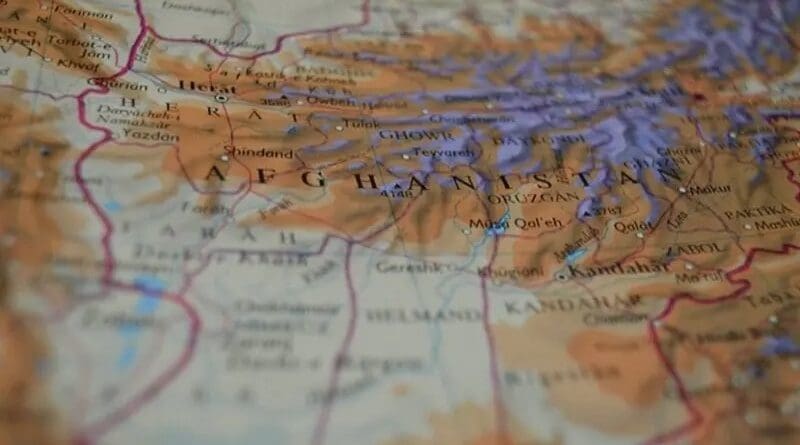Yet Another Great Game In Afghanistan: The US And China – Analysis
By IPCS
By Sriparna Pathak
The United Nations (UN) Human Development Report of 2009 rated Afghanistan as the world’s second most impoverished country. One of the severest problems in Afghanistan is that of poverty, coupled with those of unemployment, lack of development, and the poor infrastructure. Afghanistan relies on aid for around 90 per cent of its budget. In late 2009, China allocated US$ 75 billion in economic aid to Afghanistan, bringing its total close to US$1 billion since 2008. In economic terms, the US has pledged US$10.4 billion to Afghanistan for development between 2002- 08.
Afghanistan possesses large reserves of minerals such as iron ore, thorium, gas, coal and copper which are largely untapped. The Hajji Gak mine, which is known as the best known iron oxide deposit in Afghanistan, will be introduced to the world market in 2010. Speaking to reporters in London the Afghan Mines Minster, Wahedullah Shahrani said that the natural resources of Afghanistan are the biggest asset to the future of Afghanistan. Hajji Gak mine is estimated to have two billion tons of iron, whilst the iron percentage is estimated up to 63 to 65 per cent which is the highest percentage in the world. According to Afghan President Hamid Karzai, Afghanistan needs mining jobs to improve the country’s living standards.
Shahrani further said that the country’s only major mining project- the Aynak copper deposits may create 4000 jobs for Afghans, when the Metallurgical Corp. of China begins production there as early as 2014. China’s US$3.4 billion investment in the Aynak mine is the largest in Afghan history. The contract was signed in 2007 between China Metallurgical Corp. and Jiangxi Copper Corp. The other countries that were beat out by China in securing the joint venture on Aynak included Russia’s Basic Element Group, London based Kazakhmys Consortium, Hunter Dickinson of Canada and the US copper mining firm Phelps Dodge.
The expected initial annual output of copper from the Aynak joint venture is 1, 80,000 tons of copper, which is expected to grow to 3, 20, 000 tons. China will have rights to half of the output. In addition to setting up the copper production infrastructure, which includes a smelter, power generation station, coal mine and groundwater system, the Chinese joint venture is also building roads, the first national railway, and new homes for those displaces from the immediate area of the mine.
This is not the first Chinese project; two of China’s biggest telecom equipment manufacturers, Huawei and ZTC have developed cell phone technologies and Internet expansion equipment in Kabul and several other Afghan provinces. In previous years, the Chinese have also been involved in the Parwan irrigation project and in rebuilding hospitals in Kabul and Kandahar.
However, according to several American analysts and commentators, China has made little progress on the new power plants and roads it promised, raising concerns that the Afghan economy may not benefit as had been expected. According to Tom Lynch, research fellow for Near East and South Asia at the National Defense University Institute for National Strategic Studies, China has proved to be an unreliable investor in natural resources rarely contributing to local communities, and has often left the land scarred with ecological destruction.
Another concern that has been raised by several American scholars, particularly by Robert Kaplan is that while the US is sacrificing its “blood and treasure”, the Chinese will reap the benefits.” According to Ritter, the President of the Afghan- America Chamber of Commerce, the U.S. needs a policy on developing mines and minerals in Afghanistan, or the U.S. will be dominated by the Chinese. Besides this, China’s investments in Aynak are thought of as being led purely by its own energy interests.
What needs to be kept in mind in context of this postmodernist version of the Great Game is that every stakeholder, including Afghanistan seeks its national interests. Just the way China will be meeting its increasing energy demands through such investments, Afghanistan seeks increase in employment, the building of infrastructures and gains from the exploitation its assets.
As far as China benefiting while American soldiers seek to ‘stabilize’ the Afghan nation is concerned, it needs to be kept in mind that stability cannot be produced only through military spending that the US is engaged in. It also requires infrastructure spending. Given the fact that China has undertaken infrastructure projects in other conflict countries such as Sudan and the Democratic Republic of Congo, it is highly probable that China will be able to do the same in Afghanistan. Also the fact remains that the perceived Chinese inability after three years to fulfill its promises is only from the lenses of the West. As such, no complaint has been so far registered from the Afghan side.
Rather than viewing economic engagements from the lenses of realism and conflict, and turning Afghanistan into a situation wherein Chinese and American interest are mutually exclusive, a more pragmatic approach needs to be taken so that mutual benefits for all the parties involved can be achieved and the situation is win-win for all the actors involved.

